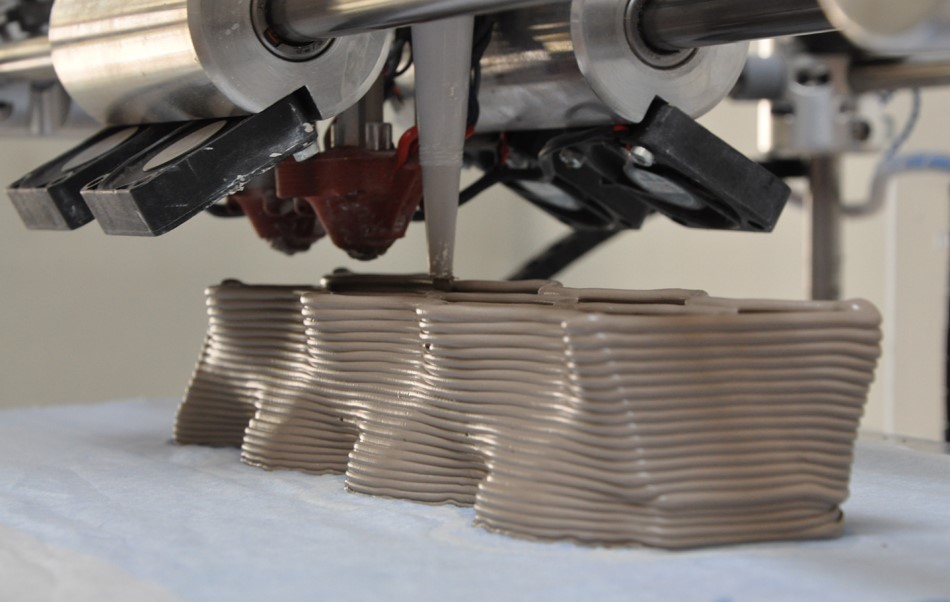Three-dimensional (3D) printing techniques have quickly become some of the most widely used tools to rapidly design and build new components. A team of engineers at the University of Bristol has developed a new type of 3D printing that can print composite materials, which are used in many high-performance products such as tennis rackets, golf clubs and airplanes. This technology will soon enable a much greater range of things to be 3D printed at home and at low cost.
The study, published in
Smart Materials and Structures, describes the novel method in which ultrasonic waves are used to position tiny reinforcement fibers as part of the 3D printing process. The fibers are formed into a microscopic reinforcement framework that gives the material strength. This microstructure is then set in place using a focused laser beam, which locally cures the epoxy resin and then prints the object,
according to the University of Bristol news site.
FIRST THINGS FIRST: WHAT IS 3D PRINTING?
Three-dimensional (3D) printing or additive manufacturing (AM) is an ensemble of technologies and systems used to manufacture objects of virtually any shape. It’s the process of joining materials to make objects from 3D model data, layer upon layer, and other synonyms include additive fabrication, addictive additive processes, etc.,
explains BCC Research analyst Alessandro Varotto.
“The unique advantages of 3D printing in the design, development, production and support over traditional manufacturing technologies could lead to intense disruption across many industries,”
says Varotto. “The main areas of disruptions will include accelerated product development, enhanced product design and capabilities, smaller manufacturing footprints, as well as lower cost and greater flexibility in the mass production of custom designs.”
WHAT IS ULTRASONIC TECHNOLOGY?
The word “ultrasonic” combines the Latin roots ultra, meaning “beyond,” and sonic, meaning “sound.” The field of ultrasonics thus involves the study and application of the energy of sound waves vibrating at frequencies greater than 20,000 cycles per second (i.e., beyond the range of human hearing),
according to Srinivasa Rajaram, an analyst with BCC Research.
INDUSTRIAL ULTRASONICS
Ultrasonics has found wide industrial use, according to Rajaram. For example, metals can be welded together by placing their surfaces in contact with each other and irradiating the contact with ultrasound, he says. The molecules are stimulated into rearranged crystalline form, making a permanent bond.
The processing and assembling applications of ultrasonics cover many industries, as seen with 3D printing. There’s also the food processing, chemical processing, metal welding, and plastic welding industries, to name a few. In all of these, as well as in many other allied fields, the use of ultrasonics is increasing rapidly,” he says.
ULTRASONIC TECHNOLOGY LENDS VERSATILITY TO PRINTING PROCESS
Tom Llewellyn-Jones, a PhD student in advanced composites who developed the ultrasonic manipulation technique, says the versatile nature of the ultrasonic enables a wide-range of particle materials, shapes and sizes to be assembled, leading to the creation of a new generation of fibrous reinforced composites that can be 3D printed.
According to Llewellyn-Jones, the most common type of 3D printing for component production is fused filament fabrication, wherein a thermoplastic filament is extruded through a heated nozzle and the part is built layer by layer, effectively growing from the print bed. The method is cheap, reliable and allows for a wide variety of materials with different properties to be printed, he says.
“However, like most 3D printing techniques, the structural properties of the part are relatively poor, and not suitable for producing finished components for high stress purposes,” Llewellyn-Jones maintains. “Unfortunately, the full potential of these components is limited by the mechanical properties of the materials used.”
He says the aim of this study was “to create and demonstrate a novel method to instantaneously orient micro-scale glass fibers within a selectively cured photocurable resin system, using ultrasonic forces to align the fibers in the desired 3D architecture.”
What’s also noteworthy about this new type of 3D printing is that it can be added cheaply to an off-the-shelf 3D printer, which then turns it into a composite printer.
Rajaram anticipates the global market for ultrasonic equipment, which totaled almost $23.9 billion in 2014, to reach about $45.2 billion in 2020, reflecting a five-year compound annual growth rate (CAGR) of 11.2%.




